The Barbados Cherry (also called Acerola or Guyana Cherry) is a fast-growing tropical favorite—known for its juicy, vitamin-C-packed fruit and lush, ornamental look.
Growing a Barbados cherry tree can be a truly rewarding endeavor, bringing not only vibrant foliage into your garden but also delicious, nutrient-rich fruit that you can enjoy. However, we understand that achieving success with this tropical gem requires careful planning and attention to detail. It all begins with selecting the right location and gathering the essential tools and materials—laying a solid foundation for your journey.
As you delve into the nuances of soil preparation, proper planting techniques, and ongoing maintenance, remember that these steps are crucial for ensuring your tree thrives. Have you considered the common challenges that gardeners face? Being equipped to troubleshoot these issues can make all the difference in your experience. This guide will explore the vital steps necessary for nurturing a Barbados cherry tree, empowering you to cultivate a flourishing addition to your landscape. Together, we can make your gardening dreams a reality!
👉 Ready to grow your own? Get your Barbados Cherry Tree from Everglades Farm—expert-grown and shipped fast from Florida.
Gather Essential Tools and Materials
- Shovel: This tool is ideal for digging the planting hole, ensuring that your tree's roots are placed just right.
- Garden Trowel: It’s perfect for making those smaller adjustments and assisting with the planting process.
- Earth Test Kit: Evaluating the pH and nutrient levels of your soil is crucial for creating optimal growing conditions. As the Nanpu Community wisely states, 'Good ecology is the sole path to achieving stable and sustainable industrial growth,' highlighting the importance of understanding your land.
- Compost or Organic Matter: Enriching the soil with compost enhances drainage and promotes healthy root development.
- Mulch: This wonderful material helps retain moisture and suppress weeds, creating a nurturing environment for your tree.
- Watering Can or Hose: Essential for irrigating your new plant after planting, ensuring it receives the moisture it needs.
- Fertilizer: A balanced fertilizer designed for fruit-bearing plants will encourage strong growth and abundant fruit production.
- Gardening Gloves: These will protect your hands while you work with the earth and plants, making your gardening experience more enjoyable.
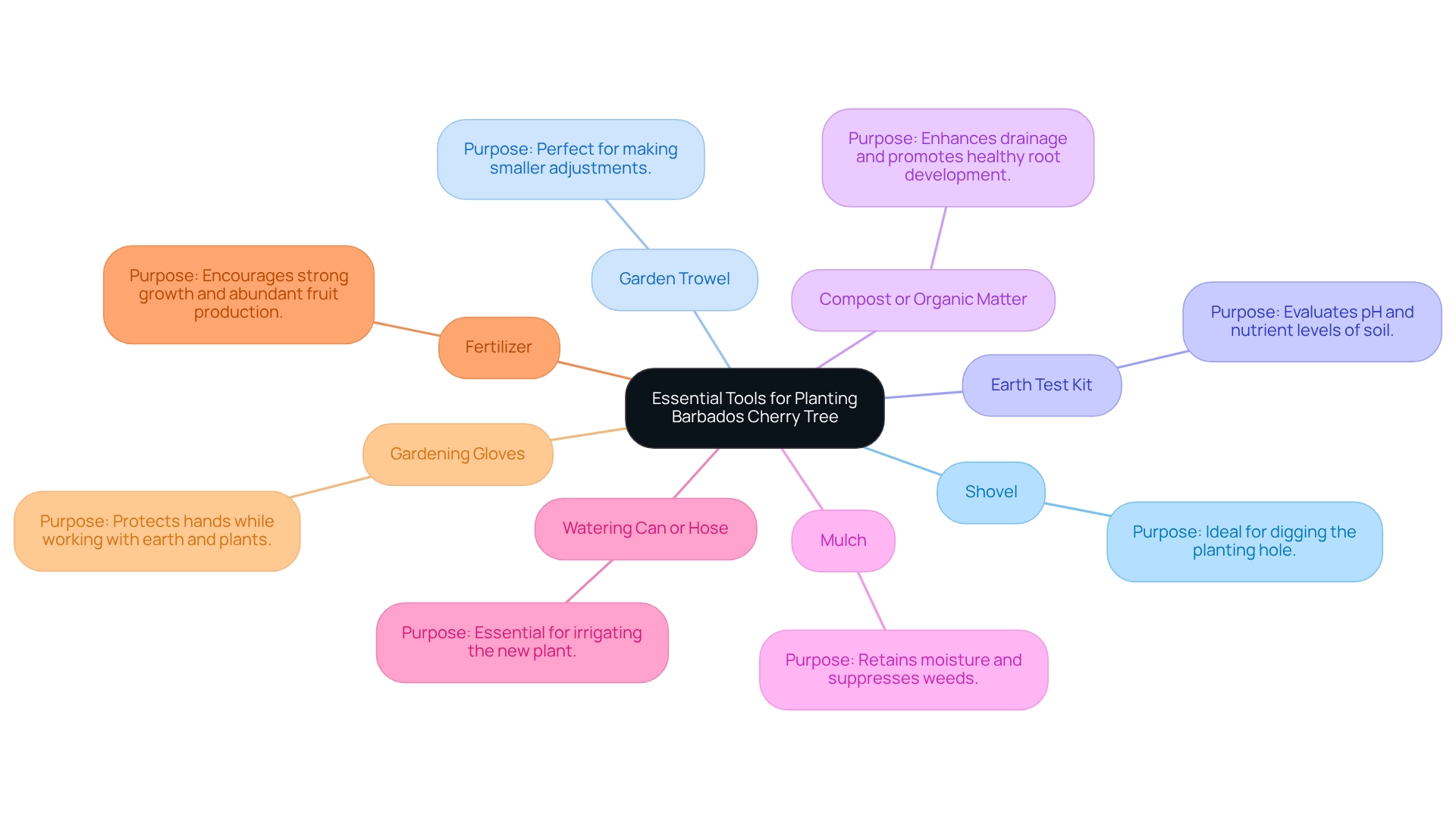
Choose the Right Location and Prepare the Soil
- Select a Sunny Spot: Begin by identifying a location that basks in at least 6 to 8 hours of direct sunlight each day. Full sun is essential for the healthy growth and fruitful production of West Indian fruit trees. Understanding these light needs can truly enhance your growing conditions, just as highlighted in the case study titled "Light Requirements for Cherry Trees."
- Check Soil Drainage: It’s vital to ensure that the area has well-draining earth. Barbados cherry plants are sensitive to waterlogged conditions, which can lead to root rot. Proper drainage is essential for their overall health. Research shows that well-drained earth significantly enhances fruit tree development and yield, so let’s prioritize this aspect.
- Test Ground pH: Use a testing kit to determine the pH level of your soil. The ideal pH range for Barbados cherry is between 5.5 and 6.5. If adjustments are needed, consider enhancing the ground with lime to raise the pH or sulfur to lower it. This small step can make a big difference in your plant's health.
- Prepare the Soil: Dig a hole that is twice as wide and deep as the root ball. By incorporating compost or organic material, you can enhance ground fertility and drainage, creating a nutrient-rich environment for your plant to thrive.
- Loosen the Ground: Don’t forget to break up any compacted earth at the bottom of the hole. This will facilitate root growth, ensuring that your plant can establish itself effectively.
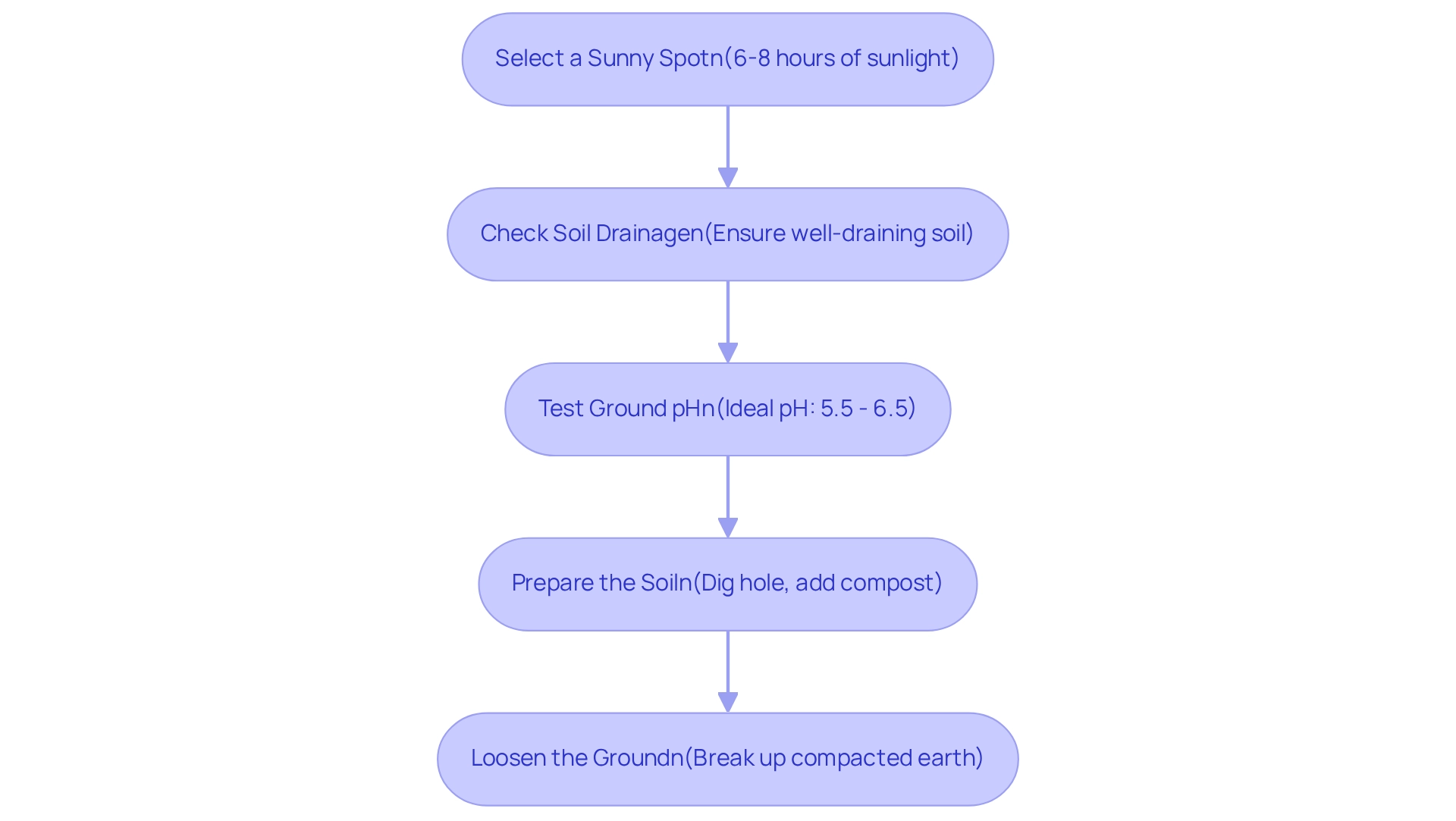
Plant the Barbados Cherry Tree
- Position the Plant: Start by centering the plant in the hole. Ensure that the top of the root ball is level with the surrounding soil, which sets a strong foundation for growth.
- Backfill the Hole: Gently fill the hole with the earth you removed, packing it lightly to eliminate air pockets. Be mindful not to bury the trunk, as this can hinder its development. It's best to avoid adding fertilizer to the planting hole; this encourages roots to spread into the surrounding soil, promoting healthy growth.
- Irrigate Completely: After backfilling, give your plant a deep drink of water. This helps compact the earth around the roots and provides the initial moisture it needs to thrive.
- Add Mulch: Next, apply a 3-inch layer of mulch around the base, keeping it a few inches away from the trunk to prevent rot and ensure airflow.
- Stake if Necessary: If your plant is tall or situated in a windy area, consider staking it for support until it establishes a strong root system, as these steps are crucial for ensuring your Barbados cherry thrives.
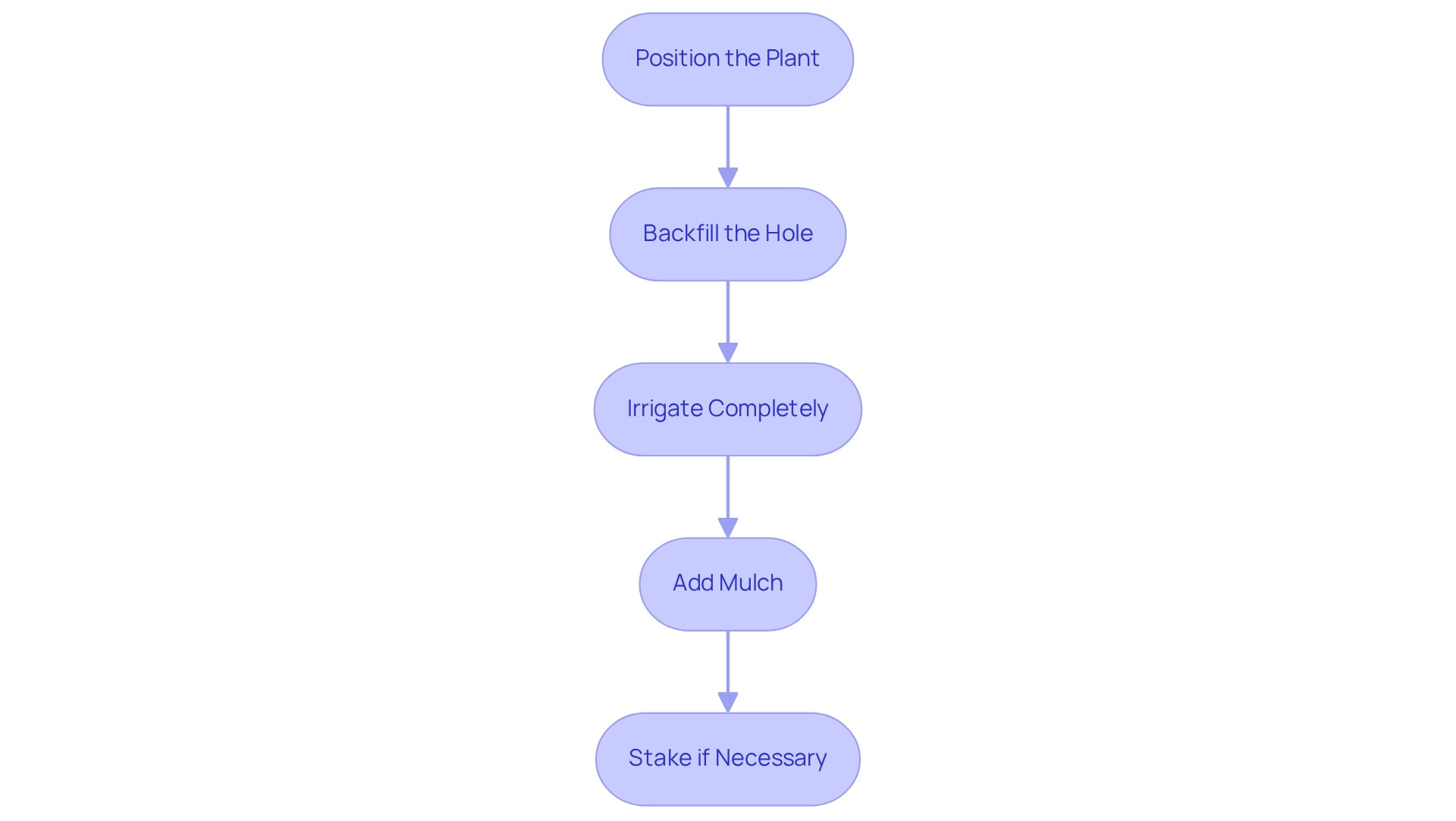
Maintain and Care for Your Barbados Cherry Tree
- Watering: It's essential to keep your plant hydrated, especially during dry spells. Remember to let the top inch of soil dry out between waterings to avoid the risk of overwatering. How often do you check your plants' soil? To encourage healthy growth and bountiful fruit production of the Barbados cherry, apply a balanced fertilizer designed for fruit plants every 6 to 8 weeks during the growing season. This nurturing touch will help your tree flourish.
- Pruning: Take a moment each year to trim your plant, removing any dead or crossing branches. This simple act not only shapes the tree but also promotes better air circulation and sunlight penetration. Don’t you love seeing your plants thrive?
- Pest Management: Keep an eye out for common pests like aphids and whiteflies. If you notice any, using organic insecticidal soap can help you manage infestations without harsh chemicals.
- Mulching: Replenish mulch as needed to help retain moisture and suppress weeds. A thick layer of mulch can be a comforting blanket for your plant.
- By embracing these care methods, you’ll not only nurture your tropical fruit plant but also enjoy the delicious rewards it brings for years to come. Happy gardening!
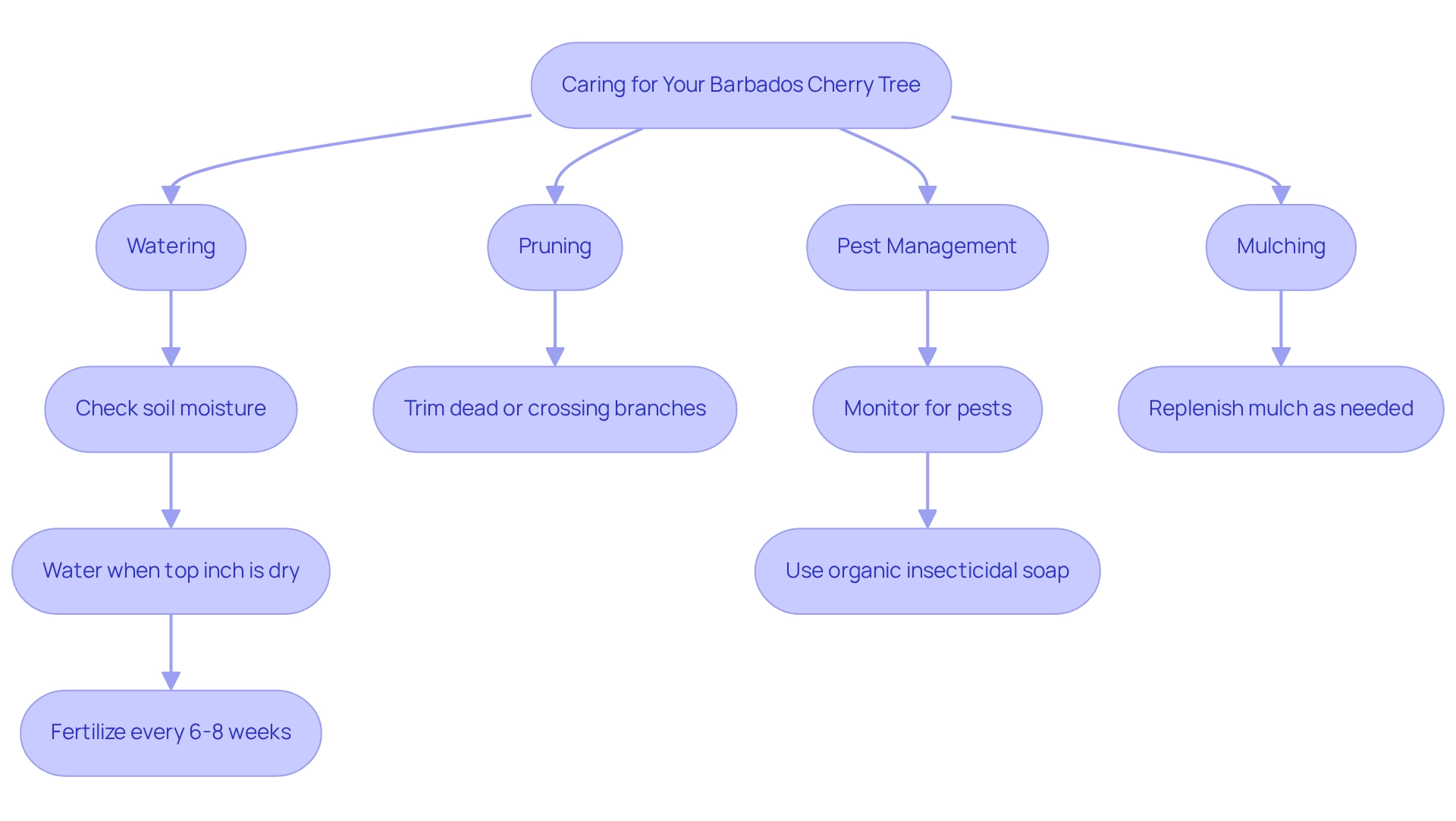
Troubleshoot Common Growing Issues
- Yellowing Leaves: This could be a sign of overwatering or a nutrient deficiency. Take a moment to check the soil moisture and consider applying a balanced fertilizer to give your tree the boost it needs.
- Wilting: If your plant appears to be wilting, it might be crying out for water. Ensure that you maintain consistent watering, especially during those dry spells.
- Poor Fruit Production: Insufficient sunlight or a lack of nutrients can hinder fruiting. Make sure your plant enjoys full sun and receives adequate fertilization to thrive.
- Pest Infestations: Regularly inspect your plant for any pests. If you spot any, don’t hesitate to treat them with organic insecticides or neem oil; your tree will thank you!
- Diseases: Fungal diseases like leaf spot can be a concern. To minimize the risk, ensure good air circulation around your tree and avoid overhead watering.
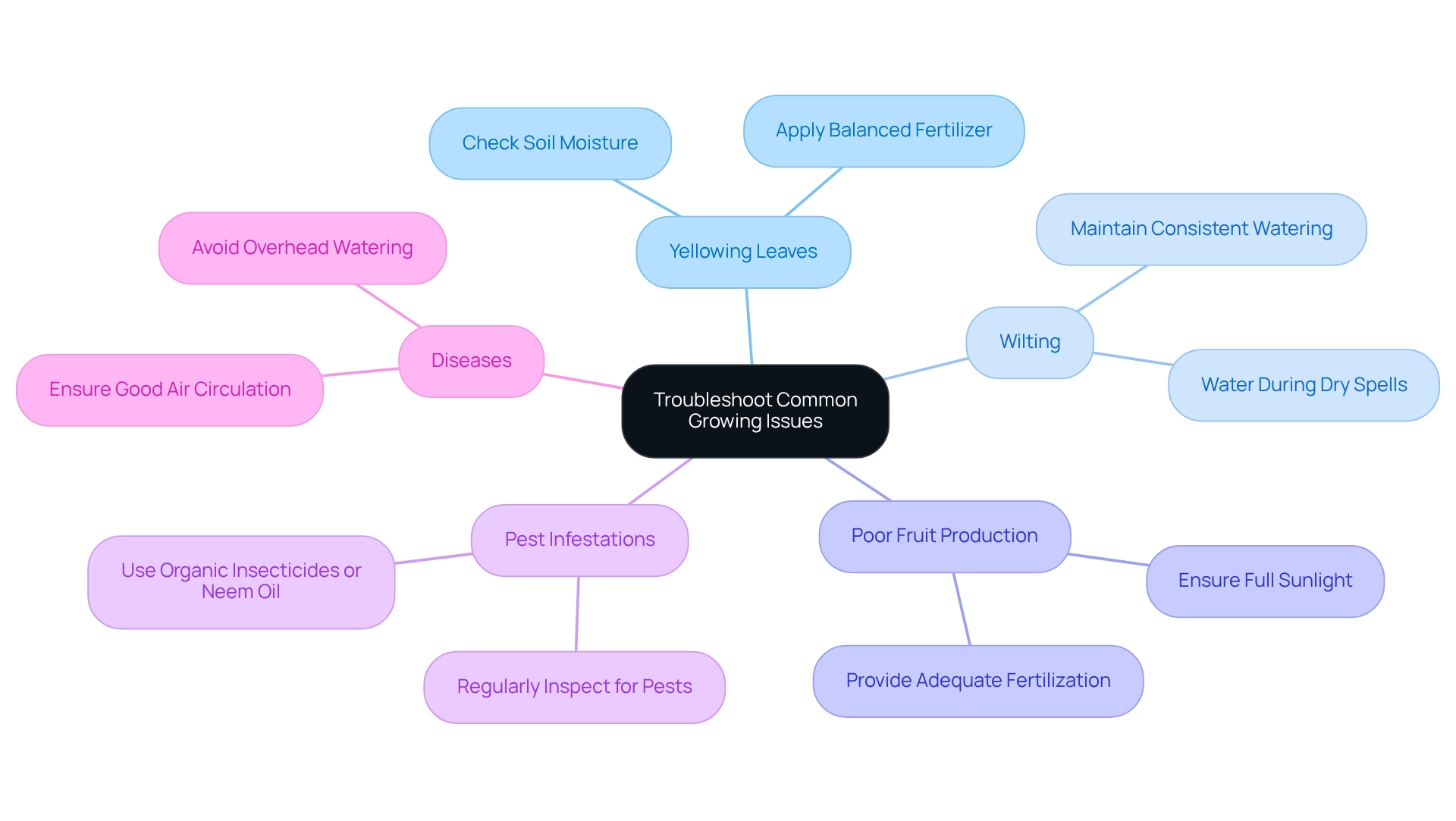
Conclusion
🌺 Let’s Grow Something Sweet Together
Your Barbados Cherry Tree deserves the best start—and we’re here to help. From fast Florida shipping to detailed care tips, Everglades Farm supports you every step of the way.
👉 Get your own Barbados Cherry Tree here and start growing tropical fruit at home!





0 comments